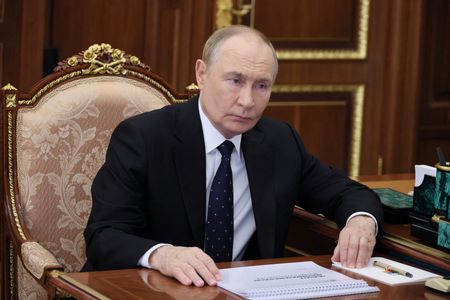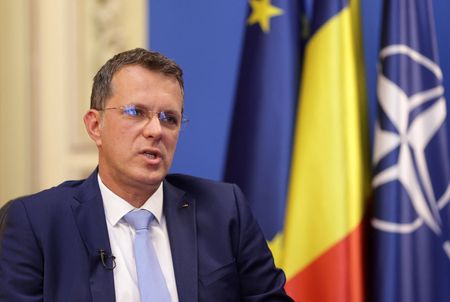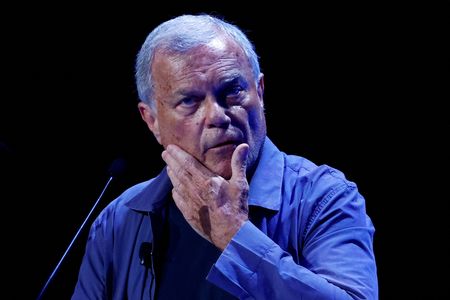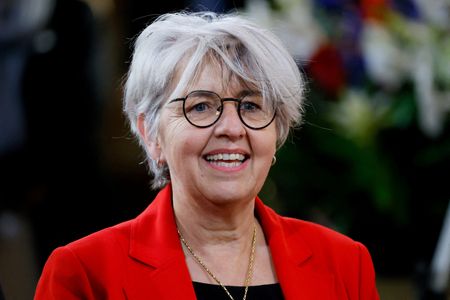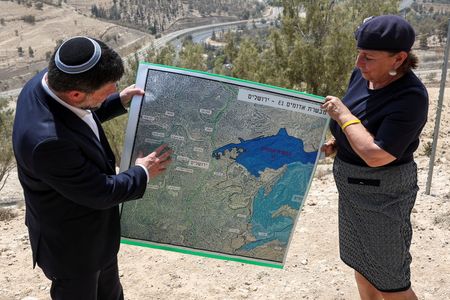By Mark Trevelyan
LONDON (Reuters) -Russian President Vladimir Putin said on the eve of a summit with U.S. Donald Trump that their two countries might strike a new deal on nuclear weapons as part of a wider effort to strengthen peace.
THE SUMMIT IS ABOUT UKRAINE, SO WHY TALK ABOUT NUKES?
Putin has been under pressure from Trump to agree to end the three-and-a-half-year-old war in Ukraine, something Moscow says is part of a complex of security issues that have raised East-West tensions to their most dangerous level since the Cold War.
With Russian forces gradually advancing in Ukraine, Putin has rebuffed Kyiv’s calls for a full and immediate ceasefire.
But if the summit makes progress towards a new arms control treaty, Putin could argue that he is engaging on wider peace issues.
That could help him persuade Trump that now is not the right time to impose new sanctions on Russia and buyers of its oil and other key exports, as the U.S. leader has threatened.
It could also be part of a broader drive to improve relations with Washington, including on trade and economic issues, where the Kremlin says there is huge untapped potential.
WHY HAS PUTIN REPEATEDLY TALKED UP RUSSIA’S NUCLEAR ARSENAL?
Throughout the war, Putin has delivered veiled threats about using nuclear missiles and warned that entering a direct confrontation with Russia could lead to World War Three.
They have included verbal statements, war games, and lowering Russia’s threshold for using nuclear weapons.
The fact that Russia has more nuclear weapons than any other country gives it a stature in this domain that far exceeds its conventional military or economic power, allowing Putin to face Trump as an equal on the world stage when it comes to security.
HOW MANY NUCLEAR WEAPONS DO RUSSIA AND THE U.S. HAVE?
According to the Federation of American Scientists, Russia and the United States have estimated military stockpiles of 4,309 and 3,700 nuclear warheads respectively. China trails behind with an estimated 600.
WHAT DOES THE EXISTING U.S.-RUSSIA NUCLEAR TREATY SAY?
Signed by then-U.S. president Barack Obama and his Russian counterpart Dmitry Medvedev in 2010, the New START treaty caps the number of strategic nuclear warheads that the United States and Russia can deploy.
Each is limited to no more than 1,550, and a maximum of 700 long-range missiles and bombers. Strategic weapons are those designed by each side to hit the enemy’s centres of military, economic and political power.
The treaty came into force in 2011 and was extended in 2021 for five more years after U.S. President Joe Biden took office. In 2023, Putin suspended Russia’s participation but Moscow said it would continue to observe the warhead limits.
The treaty expires on February 5. Security analysts expect both sides to breach the limits if it is not extended or replaced.
WHAT ARE THE OTHER NUCLEAR POINTS OF CONTENTION?
In a symptom of the underlying tensions, Trump this month said he had ordered two U.S. nuclear submarines to move closer to Russia because of what he called threatening comments by Medvedev about the possibility of war with the U.S. The Kremlin played down the move but said “everyone should be very, very careful” with nuclear rhetoric.
Separately, an arms race looms over shorter- and intermediate-range missiles, which can also carry nuclear warheads.
During Trump’s first presidency, in 2019, he pulled the U.S. out of a treaty that had abolished all ground-based weapons in this category. Moscow denied his accusations that it was cheating.
The United States plans to start deploying weapons including SM-6 and Tomahawk missiles, previously placed mainly on ships, as well as new hypersonic missiles, in Germany from 2026.
Russia said this month it no longer observes any restrictions on where it might deploy intermediate-range missiles.
(Reporting by Mark Trevelyan; Editing by Kevin Liffey)

